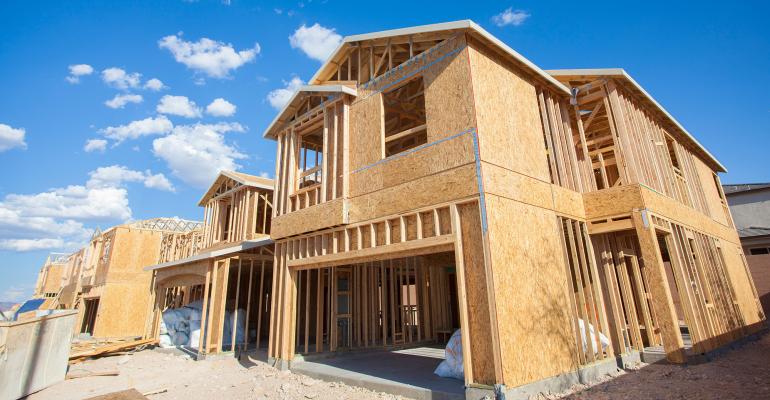(Bloomberg Opinion) -- After the housing market’s surprise rebound in January, 30-year mortgage rates have risen to nearly 7%, cooling things back off. Mortgage applications have slumped to a 28-year low.
But that’s not what Toll Brothers Inc. wanted to talk about on its earnings call last week. The luxury homebuilder said its new orders in January were the highest for the month in any year from 2006 to 2020. And that strength has carried through into February.
“We are encouraged by what we've seen across our footprint over the past month and a half,” Chief Executive Officer Doug Yearley told investors. “With the traditional spring selling season upon us and consumer confidence improving, buyers are coming off the sidelines.”
How can that be possible? Toll’s experience underscores a growing divide between the existing- and new-home markets: For buyers brave enough to proceed despite 2023’s high-rates, new construction is becoming the only game in town. January was the strongest month for new home sales in the US since March 2022.
Historically, existing-home sales far outpace purchases of new homes. It's hard to identify a recent year in the housing market that could be called normal, but in 2017 around 5.5 million existing homes were sold in the US compared with around 600,000 new homes — that would make the existing-home market roughly nine times bigger than the market for new homes.
There are 85 million owner-occupied housing units in the US, so generally it’s easier to find an existing home to buy than a newly built one, particularly in the parts of the country that no longer do much in the way of building.
But two things have changed over the past year. First, soaring mortgage rates have made homes less affordable, which has led to a slump in demand. And second, the millions of homeowners who locked in low mortgage rates over the last decade either can't afford or don't want to give up their cheap loans, which has led to a slump in the supply of houses for sale.
There was a brief period last summer when supply was rising, particularly in some of the Western metros that boomed the most during the pandemic — places like Boise, Phoenix and Las Vegas. Over the past several months, though, that supply has slowed to a trickle. I've got a couple theories for what happened: 1) When the market slowed in the spring and summer of 2022, there was a one-time boost of supply as owners like iBuyers and speculators decided to sell before any large downturn could materialize; and 2) once those homes washed out of the pipeline, remaining owners are those with low mortgage rates who have no intention of selling when prices have fallen below their record highs, and especially when they would be stuck with a much higher rate if they had to obtain a new mortgage on another home.
Enter the homebuilders. Unlike a homeowner who can choose to hold onto their house until the market becomes more favorable, builders are in the business of building and selling homes regardless of the interest rate or housing environment. So if there’s a dearth of resale inventory for existing homes, that just means less competition. Good news for builders!
Builders can also get creative with incentives and floor plans to help buyers with affordability, whether that’s cutting prices, building smaller homes or offering to buy down mortgage rates for a period of time to provide some relief on the rates front.
That means there is at least the potential of 2023 being a year where overall housing demand is down because mortgage rates stick closer to 7% than 6%, while the much-smaller new home market actually grows as builders provide more options for people who are able and willing — or maybe forced by circumstances — to move ahead with buying a home.
Ironically for the Federal Reserve, this is a situation where cooling off the housing market overall could make inflation worse. Building homes is inherently inflationary as it involves securing land and building materials and hiring construction workers. So if the Fed’s goal is to use higher interest rates to weaken a primary channel of inflation, the current dynamic doesn’t seem to work in its favor.
But that’s where we’re headed. There will be some Americans who want to buy homes even if affordability remains a challenge, and if the only homes on the market are new construction, then that's where the sales are going to happen, helping keep this segment of the industry going strong.
More From Bloomberg Opinion:
- What Do US Growth Zones Have in Common? New Housing: Justin Fox
- Gaming Mortgage Rate Locks Will Only Cost You: Alexis Leondis
- That Instagram Dream Home Will Have to Wait: Leticia Miranda
Want more Bloomberg Opinion? OPIN <GO>. Or subscribe to our daily newsletter.
To contact the author of this story:
Conor Sen at [email protected]
© 2023 Bloomberg L.P.





